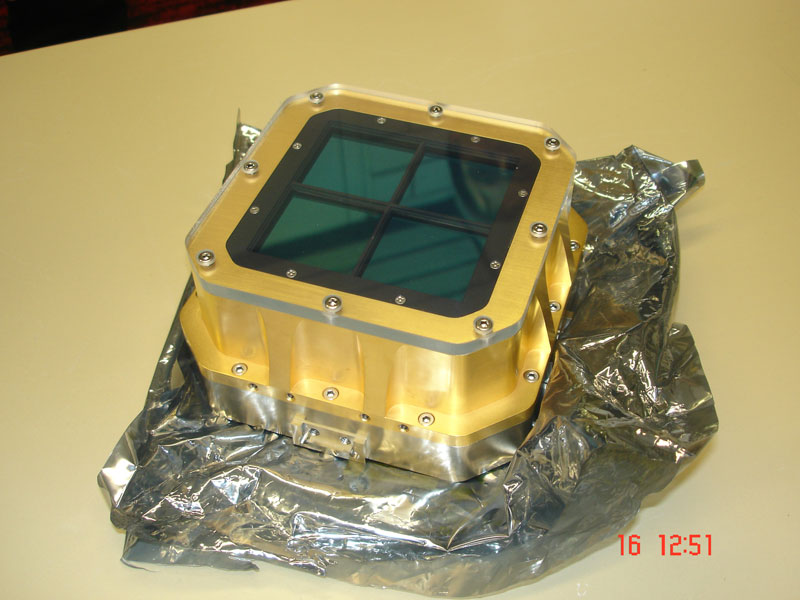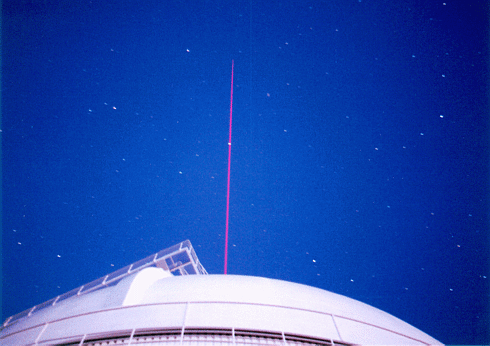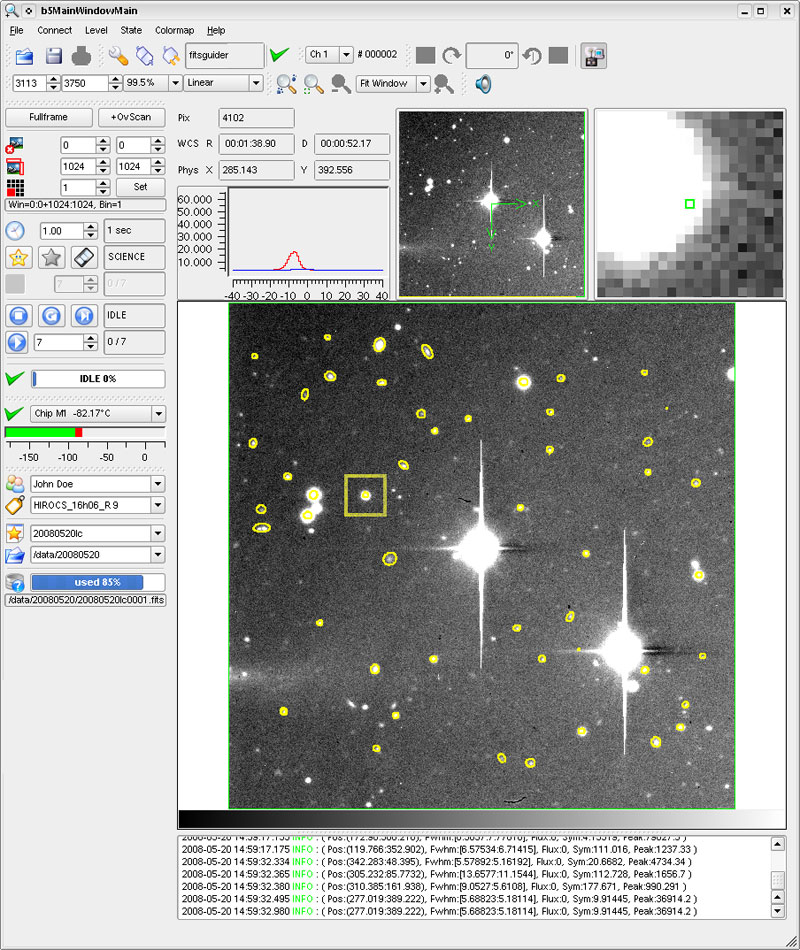| Version 163 (modified by , 8 years ago) (diff) |
|---|
The AstroTechTalk (ger) offers a place to discuss, for all interested colleagues and especially for the technical departments, the project leaders, the administration and the scientists as the ultimately users:
- status of instrumentation projects
- scientific tasks and features of the instruments in construction or planned
- new possible involvements
- technical innovations and developments
- technical problems and their solutions
- logistical problems and their solutions
- how to improve operation and observation
- project standards.
Time: Always Fridays 11:00 - 12:00
Location: Hörsaal
Outline:
- Announcements (news, visitors, etc.) (mainly in German)
- Talk of about 30 min about a selected topic (German or English, will be announced)
- Follow up discussion and questions (German or English, depending on the speaker)
Please send proposals for talks via e-mail to: gaessler, hofferbert - or also available in room 021 or 211.
| Date | Speaker | Topic |
| 15.01.2016 | Andreas Quirrenbach (ZAH, LSW Heidelberg) | The commissioning of CARMENES CARMENES is as new instrument, which has been installed and commissioned at Calar Alto in the second half of 2015. Besides the Landesternwarte, MPIA and CAHA another eight institutions in Germany and in Spain participated in the development of CARMENES. This consortium will devote the coming three years to search for planets around very small and low-mass stars (so-called red dwarfs). One prime goal is the discovery of earth-like planets comprising surface temperatures, which allow for the evolution of life. To reach the necessary sensitivity and precision, CARMENES is equipped with two extremely stable spectrographs, one for the visible and one for the NIR wavelength range, respectively. Those are installed inside dedicated vacuum tanks in the dome's Coudé lab and coupled via fibers to the 3.5m telescope. Between 2016 and 2018, 80% of the observing time of the 3.5m telescope are reserved for the CARMENES survey. During the remaining night time the instrument is available for any other project. Presentation: German Slides: German Questions: German, English |
| 22.01.2016 | Ralph Hofferbert | On the way to the stars: Shipping of LINC-NIRVANA to the LBT As already written on our Christmas card: Wintry mood prevailed in November 2015 on top of Mount Graham, Arizona, at the Large Binocular Telescope (LBT): After more than ten years of planning, manufacturing and testing, LINC-NIRVANA found its ultimate mounting pad between the two primary mirrors of the LBT for the first time. The near infrared imaging instrument shall combine – depending on the implementation phase – adaptive optics and interferometric beam combination of the two mirrors to achieve ultra high spatial resolution. Beforehand, the instrument had been disassembled and made a 6-week-trip over the Atlantic as one oversize transport plus nine sea containers. In the months to come the delicate optical components and the cryogenic near-infrared camera will be re-integrated, such that LINC-NIRVANA and the telescope get finally married from mid of 2016 on. The talk will mainly address the aspects related to the shipping and the initial installation at LBT. Besides that, the prime features of the instrument itself and the planned activities for 2016 will be briefly described. Presentation: German Slides: German Questions: German, English |
| 29.01.2016 | Werner Laun | The MATISSE cryostats MATISSE, the Multi- AperTure mid- Infrared Spectro Scopic Experiment for the VLTI comprises two cryostats for the cooling of the instrument's complex cold optics down to 40K. Design and development of those cryostats is one of MPIA's major work packages for MATISSE. Various boundary conditions, contraints and interfaces require a specific and custom-made realisation. The talk tries describing in a vivid and generally understandable way how the technological challenges have been solved. Presentation: German Slides: Englisch Questions: German, English |
| 05.02.2016 | -- | Carnival break |
| 12.02.2016 | -- | Carnival break |
| 19.02.2016 | Jeroen Bouwman | Precise spectra-photometry from space |
| 26.02.2016 | Florian Rodler | The search for Earth 2.0 |
| 04.03.2016 | ||
| 11.03.2016 | ||
| 18.03.2016 | Nadine Neumayer | What makes ARGOS unique? - Observations with ARGOS |
| 25.03.2016 | -- | Easter break (Good Friday) |
| 01.04.2016 | -- | Easter break |
| 08.04.2016 | Sascha Douffet | Safety responsibles - Main actors and their work |
| 15.04.2016 | Alexander Sivitilli | Laser Alignment Teleskop |
| 22.04.2016 | Armin Boehm | Rebuilding of the mechanical workshop (date TBC) |
| 29.04.2016 | No talk | Festkolloquium Thomas Henning |
| 06.05.2016 | -- | Bridging day (Ascension Day) |
| 13.05.2016 | ||
| 20.05.2016 | -- | Pentecost break |
| 27.05.2016 | -- | Bridging day (Corpus Christi) |
| 03.06.2016 | ||
| 10.06.2016 | ||
| 17.06.2016 | ||
| 24.06.2016 | -- | Fachbeirat |
| 01.07.2016 | ||
| 08.07.2016 | ||
| 15.07.2016 | ||
| 22.07.2016 | -- | Summer break |
| 29.07.2016 | -- | Summer break |
Preview:
Postview:
Presentations from 01.08-31.12.2015
Attachments (11)
- instrum8_gr.jpg (82.6 KB) - added by 10 years ago.
- instrum4_gr.jpg (104.4 KB) - added by 10 years ago.
- pedv3_gr.jpg (213.9 KB) - added by 10 years ago.
- alfa3.5.gif (235.6 KB) - added by 10 years ago.
- CIAO.jpg (3.8 MB) - added by 8 years ago.
- linc_nirvana_labor.jpg (255.2 KB) - added by 8 years ago.
- MATISSE.jpg (43.1 KB) - added by 8 years ago.
- miri_fm_filterwheel.jpg (145.6 KB) - added by 8 years ago.
- PACS-Chopper.jpg (80.0 KB) - added by 8 years ago.
- simple_loop.gif (965.4 KB) - added by 8 years ago.
- teaser.jpg (13.5 KB) - added by 8 years ago.
Download all attachments as: .zip




